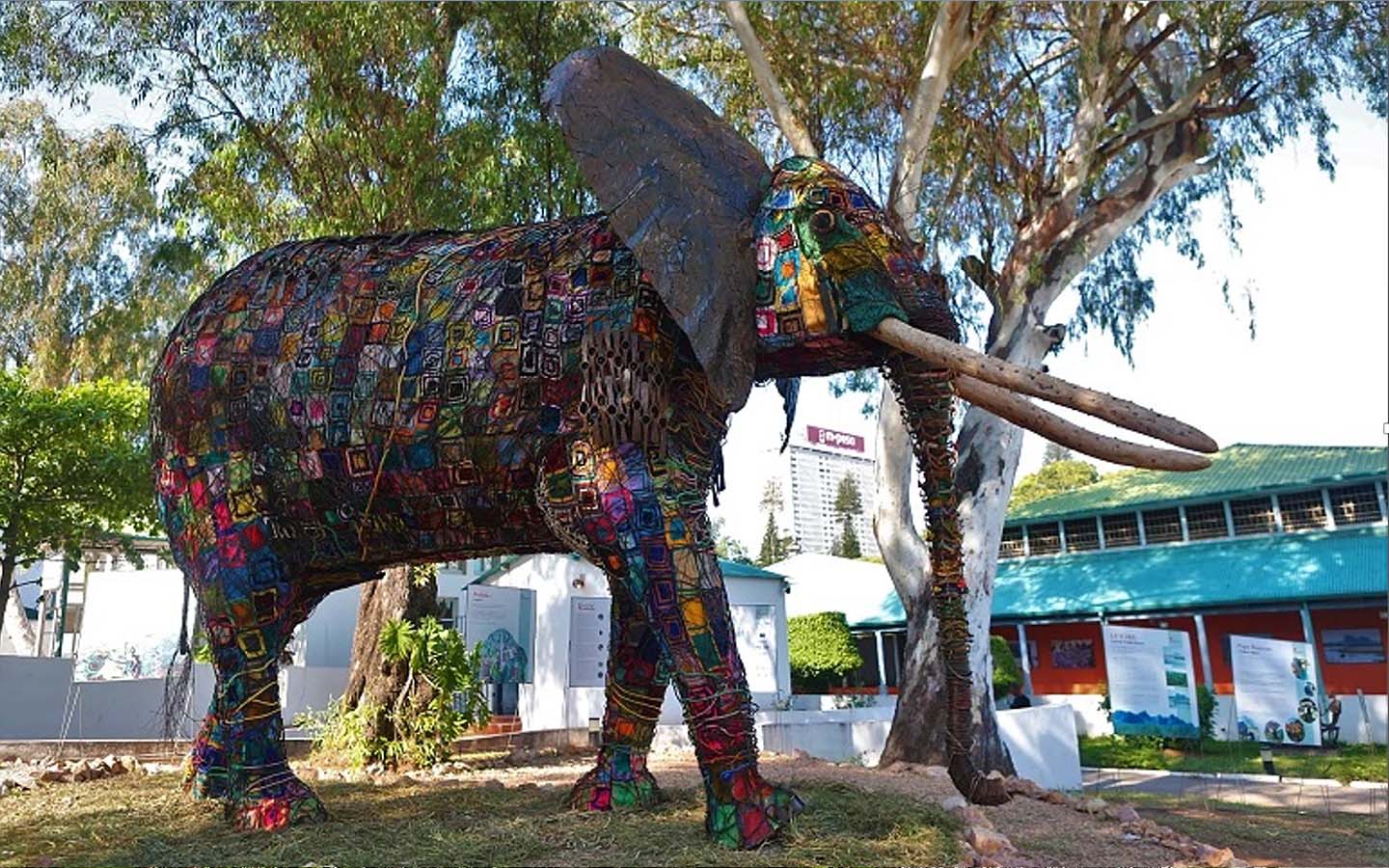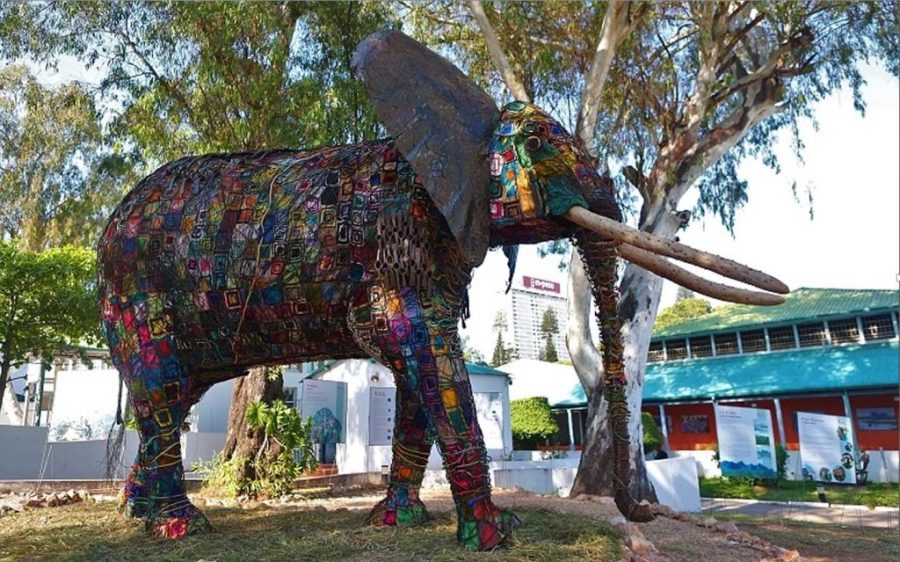A life-sized elephant sculpture, commemorating the seventh year of no recorded poaching in Mozambique’s Niassa Special Reserve (NSR), has been installed in a courtyard in central Luanda.
The mixed media sculpture was designed by Colombian biologist Paula Ferro, who has dedicated the last 18 years to conservation projects in the NSR, and Derek Littleton, director of the Lugenda Foundation which supports communities living in and around Mozambique’s largest conservation area. The work is entitled Madala, which means “old man” in the Xichangana language, and combines a metal structure comprised of materials seized from poachers over the last quarter-century, together with a brilliantly colourful crochet “skin.”
Ferro described the elephant as “the combination of a very sad story” from the conservation area and a “celebration of seven years without poaching.” It will remain on display in the courtyard of the Franco-Mozambican Cultural Centre until 3 October.
[See more: A new rainforest gains prominence in the fight against climate change]
The NSR, established in 1960, stretches across 42,400 square kilometres in the northern provinces of Cabo Delgado and Niassa. It accounts for nearly a third of the total conservation area in Mozambique and is home to the country’s largest concentration of elephants. There used to be far more, but growing demand for ivory reduced the population from 14,000 to less than 4,000, between 2009 and 2018.
In response, the Mozambican government and its partners developed strategies to stop poaching – including engaging with the communities in and around the NSR. Madala also embodies this work. The metal structure was made by five residents who trained under French sculptor Jules Pennel while around 30 others who live in the reserve made the crochet. They trained as part of the Yao Crochet project, an initiative by Ferro to support local women.
Once Madala completes its display run in October, the plan is to auction the piece and use the funds to finance an arts and crafts school project for the community. “There are no job opportunities in the reserve, and the few that do arise are technical jobs. We are forced to look for people from outside”, said Ferro. “[But] why not train people from the community?”






